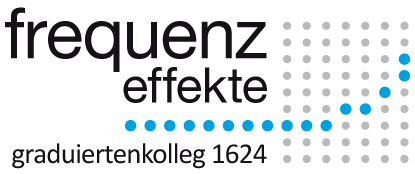Daniel Müller-Feldmeth (publiziert)
Sentences in Sentences. Modeling Frequency Effect in Local Syntactic Coherence Processing.
| Erstbetreuer | Prof. Dr. Lars Konieczny |
| Zweitbetreuer | Prof. Dr. Heike Behrens |
| Abstract | How does the frequency of word-strings influence sentence processing and interpretation? In the sentence "Der Polizist, dem die Kollegin überrascht den Jungen zeigte, war außer sich vor Freude." ( The policeman, that_DAT the colleague_NOM surprisedly/surprised the boy_AKK showed, was very happy / "The policeman that surprisedly showed the boy to the colleague was very happy.") , the embedded sequence "Die Kollegin überrascht den Jungen" (The colleague surprises the boy) forms a canonical sentence when considered in isolation. Most theories of sentence processing assume a strictly incremental, self-consistent parsing mechanism and thus do not predict an influence of local syntactic coherence on processing. Under these assumptions, an embedded sequence as the one in the example should not lead to any processing difficulty, since the locally coherent analyses is ruled out by the preceding context. However, effects of local syntactic coherence have been reported for reading times (e.g., Tabor, Galantucci, & Richardson, 2004), as well as eye movements in the visual-world paradigm (e.g., Konieczny, Mu?ller, Hachmann, Schwarzkopf, and Wolfer, 2009). In my dissertation, I show that these effects provide evidence that frequent and regular strings of words can sometimes lead to analyses and interpretation contrary to the global context of the sentence they are embedded in. I argue that the effects are best explained by radical usage-based accounts of sentence processing, as they are implemented in connectionist approaches of language acquisition and processing. Data from two visual-world experiments is revisited, showing that local syntactic coherence does not only lead to processing load, but also influences interpretational processes. A corpus analyses of the ambiguous elements that were used in the experiments shows that processing of the local sequence is modulated by the strenght of local syntactic coherence. This was operationalized as the finiteness bias of the ambiguous elements towards the globally ungrammatical, but locally coherent finite verb reading of the ambiguous adverbs ("überrascht" in the example above). A cognitive model using connectionist networks (simple recurrent networks, Elman, 1990) proves the claim that a connectionist perspective on lanugage processing can, in contrast to a number of concurring models, account for effects of local syntactic coherence and the influence of statistical properties on these effects. |
| Disziplin | Kognitionswissenschaft |
| Sprachen | Deutsch, (Englisch) |
| Forschungsrichtung | Satzverarbeitung, Konnektionismus, kognitive Modellierung |
| Schlüsselbegriffe | Lokale syntaktische Kohärenz, Frequenz, Konnektionismus, kognitive Modellierung, statistische Modellierung |


